USD
/
USD
/
Shipping to:
Currency:
Everything You Need to Know About Lab-Grown Diamonds
Are you considering a lab-grown diamond? Maybe you’re looking to buy a lab-grown engagement ring or tennis bracelet.
If so, Rêve Diamonds are here to help.
We’ve put together everything you need to know about lab-grown diamonds so you can find the perfect diamond.
SHOP LAB-GROWN DIAMONDSCall us today: +1 (646) 898 2098
WHAT IS A LAB-GROWN DIAMOND? YOUR COMPLETE GUIDE TO LAB-GROWN DIAMONDS
Lab-grown diamonds — also known as lab-created or synthetic diamonds — are created using highly advanced technological processes within strictly controlled laboratory conditions. These conditions mimic the environment under which natural diamonds form in the mantle beneath the earth's crust.
In recent years awareness of ethical concerns regarding the humanitarian and ecological issues surrounding the mining of diamonds, coupled with the high cost of mined natural diamonds, has increased the popularity of lab-grown diamonds.
If you’re curious about lab-grown diamonds, we have created this guide to help you find all the information you need about this ethical alternative to natural diamonds.
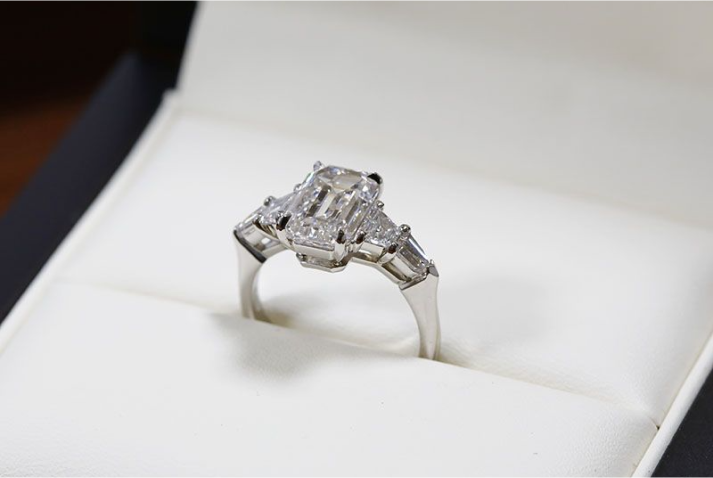
Lab-Grown Diamonds at a Glance — Reasons to Choose a Lab-Grown Diamond
Before we dive into a more detailed look at lab-grown diamonds, here’s an overview of the reasons why someone might choose a lab-grown diamond over a natural diamond:
 Ethical concerns
Ethical concernsLab-grown diamonds are not mined from the earth, which means they do not contribute to environmental damage or social injustices often associated with diamond mining.
 Cost
CostLab-grown diamonds are typically more affordable than natural diamonds since they are created in a laboratory rather than being mined from the earth.
 Quality
QualityLab-grown diamonds are chemically, physically, and optically identical to natural diamonds, so they offer the same quality and beauty.
 Customization
CustomizationLab-grown diamonds can be created in varios colors, including blue, yellow, and pink. This allows for greater customization and the ability to create unique, one-of-a-kind jewelry pieces.
 Availability
AvailabilityLab-grown diamonds are more readily available than natural diamonds, which can take millions of years to form naturally.
 Future value
Future valueWhile the value of natural diamonds may fluctuate over time, lab-grown diamonds are likely to maintain their value due to their increasing popularity and availability.
How Are Diamonds Grown in a Lab?
Two methods were developed to create diamonds within laboratory conditions. HPHT, which stands for high-pressure, high-temperature, and CVD, which refers to chemical vapor deposition. In both processes, a diamond crystal or plate is used as a seed to initiate the growth of the lab-grown diamond.

HOW ARE LAB-GROWN DIAMONDS CREATED BY HPHT?
The HPHT most closely replicates the natural diamond growth process within the earth.
Three manufacturing processes make HPHT lab-grown diamonds. These are the cubic press, the belt press, and the split sphere press. Each of these is the vehicle that creates the intensely high temperature and pressure that facilitates diamond growth.
To begin the process, a small diamond seed is placed within a growth chamber located inside a press into a carbon source such as diamond powder or graphite. It is exposed to very high heat and intense pressure, which causes the carbon source to melt into molten metal.
The carbon atoms then pass through the metal and crystallize to form a diamond around the diamond seed. The next part of the process is to allow cooling, after which the lab-grown diamond can be transformed by cutting, polishing, and shaping into its desired form.
HOW ARE LAB-GROWN DIAMONDS CREATED BY CVD?
The Chemical Vapor Deposition (CVD) technique is a more recently developed method of creating lab-made diamonds from a hydrocarbon gas mixture.
A thin slice of diamond seed is first placed into a sealed chamber heated to approximately 800 degrees Celsius. A carbon-rich gas (generally methane) and other gases are then released into the chamber. These gases are ionized into plasma, which breaks the molecular bonds within them, using lasers, microwaves, or alternative techniques. Pure carbon then sticks to the diamond seed, which slowly builds up to form a lab-grown diamond crystal.
As with HPHT, crystallization of the diamond occurs anywhere between several weeks and months, and the time left for growth determines the thickness of the lab-created diamond. The number of crystals produced depends on the number of seed plates and chamber’s size. They often have a rough edge of black graphite and display a brown coloration that can be removed by heat treatment before the faceting of the synthetic diamond.
THE DIFFERENCE BETWEEN CVD AND HPHT LAB-GROWN DIAMONDS
Synthetic diamonds made by CVD have different gemological properties than HPHT lab-created diamond material.
Lab-grown colored diamonds created using the HPHT process very often exhibit uneven coloration. This is because impurities like nitrogen or boron are incorporated into the synthetic diamond during formation. Natural diamonds occasionally show some color zoning, but this is not in the geometric pattern of HPHT lab-created diamonds. Color zoning in colored HPHT lab-grown diamonds relates to the different crystal faces resulting in patterns different from natural diamonds. In contrast, CVD-created synthetic diamonds typically exhibit relatively even coloration and banded strain patterns, and they are of high clarity with few, if any, slight dark carbon inclusions.
In HPHT lab-created diamonds, one can often see the inclusion of solidified flux metal. This manifests as black and opaque in transmitted light but displays an almost metallic luster in reflected light. This is caused by the flux metal alloy used to grow the lab-grown diamond containing nickel, cobalt, and iron. You can pick up synthetic diamonds with a high proportion of metallic inclusions with a magnet. Lab-grown diamonds created by CVD form differently; therefore, they do not have metallic inclusions. Some natural diamonds contain dark inclusions of graphite or another mineral, but these inclusions do not have a metallic luster.
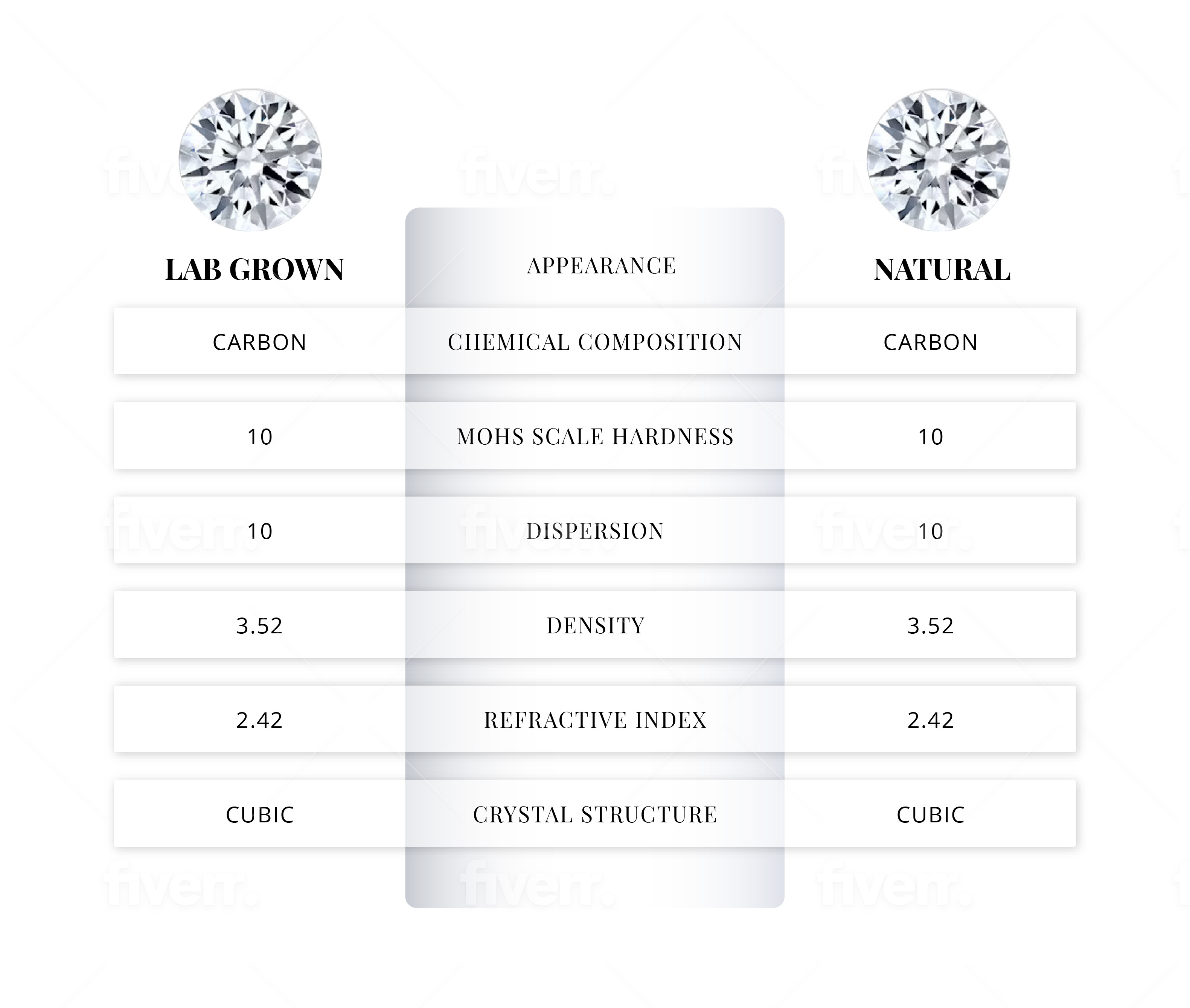
LAB-GROWN DIAMONDS VS NATURAL OR REAL DIAMONDS
HOW DO LAB-GROWN DIAMONDS DIFFER FROM NATURAL DIAMONDS?
While both kinds of precious stones are created by the same primary process and have the same fundamental structure, lab-created diamonds differ from natural diamonds. The main observable difference between lab-created diamonds and natural, mined diamonds is in the clarity of the stones.
The process of HPHT is said to produce diamonds that are far more robust and hard-wearing than natural diamonds. But to the naked eye, they are essentially the same.
LAB-GROWN DIAMONDS VS NATURAL DIAMONDS — HOW TO TELL THE DIFFERENCE

With the increase in the production of synthetic diamonds for use in jewelry, there has been a vast improvement in the color and clarity of lab-created diamonds — and an increase in carat weight. Gemologists and jewelers admit that with the improved quality of lab-grown diamonds, it is becoming more difficult to differentiate between these lab-produced gemstones and their natural counterparts as their chemical and physical properties are similar.
However, for the past 30 years, the Gemological Institute of America (GIA) laboratory has extensively analyzed and studied synthetic diamonds to enable them to tell them apart from natural diamonds. The GIA reports that they have only seen a small number of lab-grown diamonds submitted unknowingly for their official grading reports.
Read our guide on the differences between natural and lab-grown diamonds
DISTINCTIVE FEATURES OF LAB-GROWN DIAMONDS
This GIA lists many of the distinctive visual features of the two kinds of synthetic diamonds:
- HPHT Synthetic / CVD Synthetic
- Uneven colour distribution / even colour distribution
- Graining patterns / no graining patterns
- Unusual fluorescence colours
- Fluorescent colour patterns
- Occasional phosphorescence
- Metallic flux inclusions / occasional dark pinpoint inclusions
- No strain patterns / banded strain patterns
- Possible inscription on girdle
These visual features identified by the GIA are based on the characteristics displayed by a number of these lab diamonds. However, it is worth bearing in mind that — like natural diamonds — not all lab-created diamonds will display all of these features. Therefore, identifying a synthetic diamond should be based on the diamond evidencing as many specified features as possible.
BEST WAYS TO DETERMINE IF A DIAMOND IS NATURAL OR LAB-GROWN
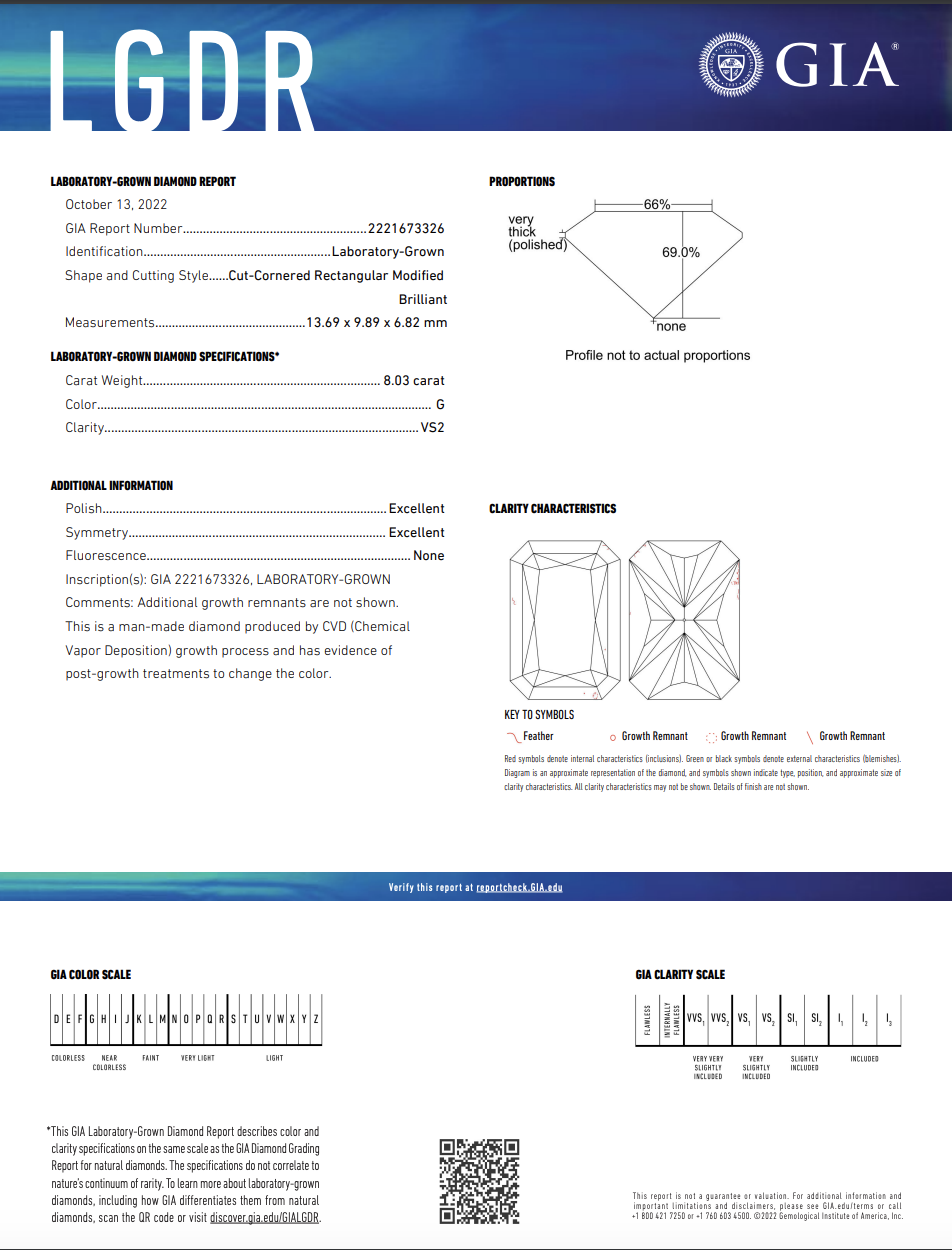
If a natural diamond is examined between two polarizing filters placed at a 90-degree angle, it will often display a bright cross-hatched or mosaic pattern of interference or “strain” colors. This occurs because of the stresses placed upon the natural diamond while forming in the earth’s mantle or during its eruption to the surface. As lab-grown diamonds form in a controlled environment with no fluctuations in pressure or changes in stress levels, they exhibit no strain or weak-banded strain patterns.
The GIA has identified the major issue in the differentiation of tiny diamonds, or melee, which can include both natural and lab-created synthetic diamonds. To assist the jewelry trade in overcoming this issue, the GIA has developed an automated instrument that enables the testing of minute diamonds. As part of their ongoing research program on lab-grown diamonds, they have recently set up a CVD growth facility to produce their own synthetic diamonds for study.
The best way for a consumer to determine whether a diamond is natural or lab-created is to always request a certificate upon purchasing the gemstone. You should not buy diamonds that are not accompanied by such a document. Diamond certificates (see below) issued by the GIA or IGI will indicate if the stone is a lab-grown or a natural diamond.
Types of Lab-Grown Diamonds
Lab-grown diamonds are created in a laboratory rather than being mined from the earth, but like natural diamonds, they can be cut into various shapes and cuts. Some of the most popular cuts for lab-grown diamonds include:
 Round Cut Lab-Grown Diamonds
Round Cut Lab-Grown DiamondsThis is the most popular cut for diamonds, and it is also a popular choice for lab-grown diamonds. The round cut has a circular shape with 58 facets, which allows it to sparkle and shine.
 Princess Cut Lab-Grown Diamonds
Princess Cut Lab-Grown DiamondsThe princess cut is a square or rectangular cut with pointed corners. It has a modern, elegant look and is a popular choice for engagement rings.
 Cushion Cut Lab-Grown Diamonds
Cushion Cut Lab-Grown DiamondsThe cushion cut has a soft, pillow-like shape with rounded corners. It is known for its romantic, antique look and is often used in vintage-style jewelry.
 Emerald cut Lab-Grown Diamonds
Emerald cut Lab-Grown DiamondsThe emerald cut has a rectangular shape with step-cut facets, which gives it a unique, angular appearance. It is a popular choice for lab-grown diamonds because it tends to showcase the clarity of the diamond.
 Oval cut Lab-Grown Diamonds
Oval cut Lab-Grown DiamondsThe oval cut is a modified round cut with an oval shape. It is known for its elongated, elegant appearance and is a popular choice for engagement rings.
Lab-grown diamonds can also be cut into other shapes, including pear, marquise, heart, and radiant cuts. The choice of cut for a lab-grown diamond will depend on the personal preference of the wearer and the style of the jewelry in which it will be set.
READ CUSTOMERS REVIEWS
WHERE TO BUY LAB-GROWN DIAMONDS — RÊVE DIAMONDS
Rêve Diamonds is one of the top destinations for those looking to buy lab-grown diamonds that are as beautiful and luxurious as natural diamonds. With our unparalleled selection of cuts, colors, and carat sizes, you can easily find a stunning diamond of your choice without breaking the bank. You don’t worry about losing out on quality either; all our lab-grown diamonds have the same physical, chemical, and optical qualities as natural diamonds — at only a fraction of the cost.
But alongside our excellent collection of lab-grown diamonds, we also offer:
 30-Day Return Policy
30-Day Return PolicyIf you wish to return an item, get in touch, and we will process the return for you. Unlike some of our competitors, within 30 days of receiving your item, if you are not completely satisfied for any reason, we will refund you your money, no questions asked.
 Free Worldwide Delivery
Free Worldwide DeliveryRêve Diamonds offers free, secure shipping on each order. Orders are shipped using the fastest delivery option available in your area. Please see here for our estimated delivery times for our different collections.
 Free Insurance Valuation
Free Insurance ValuationAt Rêve Diamonds, we understand that your jewelry is more than just a material object — it symbolizes your love and commitment. That's why we offer a complimentary insurance valuation certificate at the RRP with every purchase.
Shop for Lab-Grown Diamond Engagement Rings
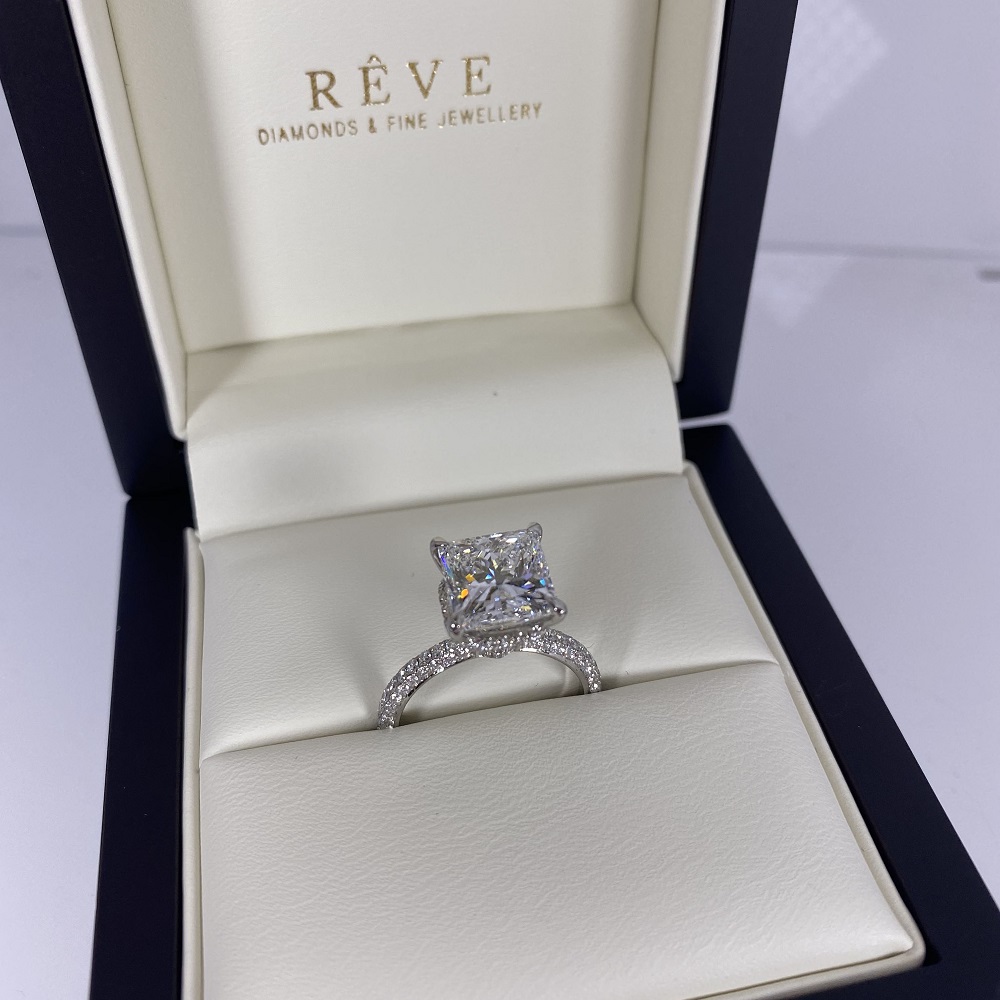
Planning a proposal requires more than just finding the perfect ring. Reve Diamonds offers an extraordinary range of lab-grown diamond engagement rings, making it easier to find the unique symbol of your love for your special someone.
Shop for Lab-Grown Diamond Tennis Bracelets
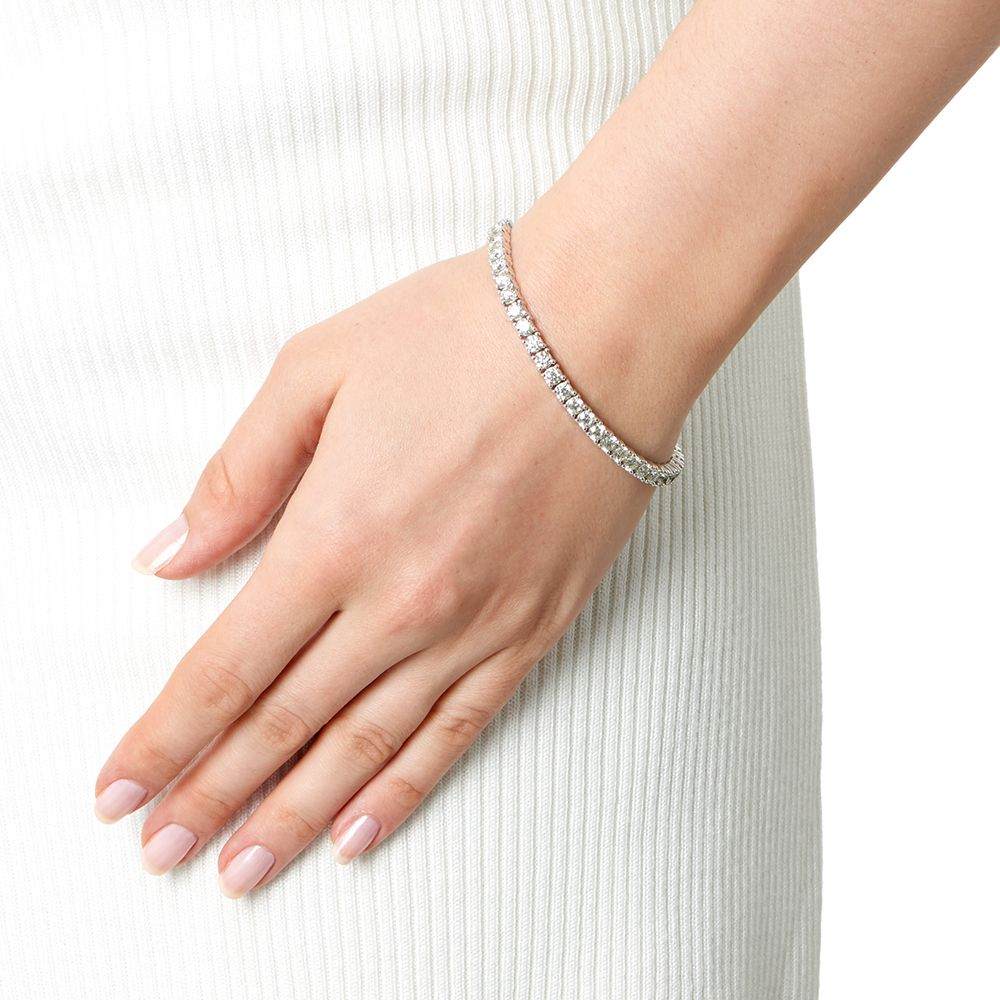
Reve Diamonds offers the chance to own a timeless symbol of luxury with their lab-grown diamond tennis bracelets. Crafted from ethically sourced diamonds and set in elegant metals, these perfect pieces will make a special addition to anyone's jewelry collection.
Explore our collection of lab-grown diamond tennis bracelets today.
LAB-GROWN DIAMONDS QUESTIONS
+WHEN WERE LAB-CREATED DIAMONDS DEVELOPED?
The first evidence of scientists creating synthetic diamonds goes as far back as the late 1800s to the 1920s. However, these first creations were analyzed but not confirmed. In the 1940s, American, Swedish, and Russian scientists began to formally grow lab-created diamonds using the processes of HPHT and CVD.
Around 1953 the first reported tiny crystals of synthetic diamonds were documented. Production of larger lab-grown diamonds for jewelry-making and industrial purposes began in the mid-1990s.
+ARE LAB-CREATED DIAMONDS THE SAME AS SIMULATED DIAMONDS?
There is undoubtedly some confusion between lab-grown diamonds and simulated diamonds, but the simple answer to this question is No, they are not the same. Simulated diamonds do not have the same physical properties as natural diamonds. In comparison, lab-grown diamonds have the same material properties and elements as natural diamonds; they just originate from the laboratory instead of from the earth.
Lab-created diamonds are manufactured diamonds that consist of actual carbon atoms arranged in the characteristic diamond crystal structure in the same way natural diamonds are formed. Diamond simulants, such as cubic zirconia and moissanite, are diamond look-alikes. They resemble the appearance and properties of natural diamonds but have a different chemical structure from real diamonds, so they are not true carbon crystals; they merely imitate the appearance of a diamond.
A diamond simulant may be artificial, natural, or in some cases, a combination of these. While their material properties are vastly different from natural or lab-grown diamonds, simulants have certain desired characteristics that ideally lend themselves to imitation. Trained Gemologists can distinguish natural and synthetic diamonds from diamond simulants, primarily by visual inspection.
+ARE THE PROPERTIES OF LAB-GROWN DIAMONDS SIMILAR TO THOSE OF NATURAL DIAMONDS?
The properties of lab-grown diamonds are very much dependent upon the manufacturing process. Some lab-created diamonds have properties such as hardness, thermal conductivity, and electron mobility that are far enhanced to those of many naturally formed diamonds. For this reason, synthetic diamonds are widely used in industrial processes such as in heat sinks, cutting and polishing tools, and abrasives.
Electronic applications of lab-created diamonds are in development, and Synthetic diamond detectors of ultraviolet (UV) light or high-energy particles are used at high-energy research facilities. Because of its unique combination of thermal and chemical stability, low thermal expansion, and high optical transparency in a wide spectral range, synthetic diamonds are fast becoming the most popular material for optical windows in high-power CO2 lasers and gyrotron. It is estimated that 98% of industrial-grade diamonds are now lab-grown diamonds.
+DO LAB-GROWN DIAMONDS GET CLOUDY OVER TIME?
Lab-grown diamonds are chemically, physically, and optically identical to natural diamonds, but they do not have the lower durability of natural diamonds, so they should not become cloudy over time. Like natural diamonds, they can accumulate dirt and grime on the surface, which can affect their appearance, but a professional jeweler can easily clean this.
It's important to note that all diamonds, whether natural or lab-grown, are subject to wear and tear over time. They can scratch and chip if they are subjected to rough treatment, and the setting of a diamond can also affect its appearance.
To maintain the appearance of your lab-grown diamond, it's important to handle it gently and protect it from rough treatment. It's also a good idea to have it cleaned and inspected by a professional jeweler regularly to ensure that it is in good condition. This will help keep your diamond looking its best for years to come.
Got more questions? Speak to an expert today.
We know that picking a diamond is a big decision. If you’ve got any questions, we’re here to help.
Find Your Lab-Grown Diamond at Rêve Diamonds Today
Are you looking for a diamond that is truly out of this world? Look no further than Rêve Diamonds.
Our stunning selection of lab-grown diamonds is second to none and provides the perfect luxury choice for all your special occasions. With every detail taken into consideration, these diamonds are designed to reflect timeless beauty with their superior clarity, color, and brilliance.
Plus, as we’re both a wholesaler and retailer, they come with a fraction of the cost of our competitors. So get ready to sparkle – and find your perfect diamond at Rêve Diamonds today.
Get in touch with our experts
-
Live chat
Use our Live Chat facility on the bottom right of your screen to talk to a jewelry specialist in real-time.
-
Call us
Give us a call and speak to an engagement ring expert directly. Get the information you need quickly and easily.
-
Book an appointment
Our loose diamonds and engagement rings are available to view in person in our NYC or LA showrooms.
-
WhatsApp us
Prefer to speak to a jewelry expert through instant messaging? Send us a message today.
-
Email us
Email service@revediamonds.com to book an appointment or get the advice you need.




